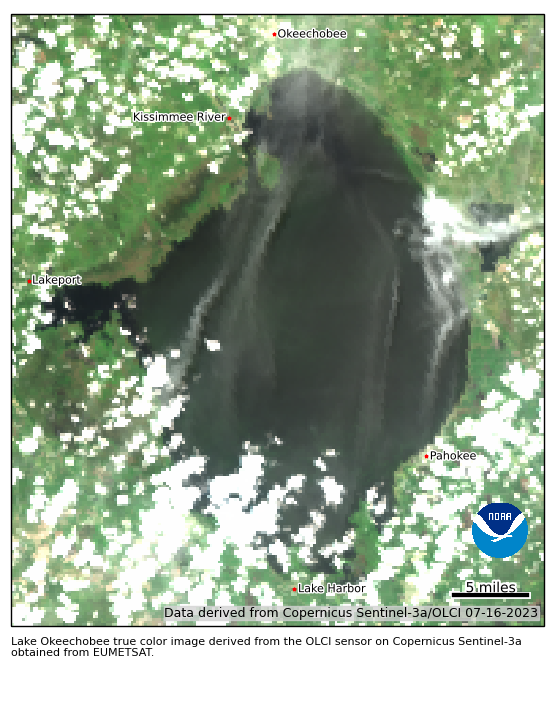Florida toxic algae is so bad it can be seen from space
The toxic algae is now coating more than 60 per cent of Lake Okeechobee

Toxic blue-green algae spread across Florida’s largest freshwater lake has become so huge that can be spotted from outer space.
The algae grew to cover 420 square miles of Lake Okeechobee on 4 July, and reached a whopping 440 square miles by 11 July, according to NASA earth observatory. The lake it covers is only 730 square miles, so the toxic algae is now coating more than 60 per cent of the body of water.
The National Centers for Coastal Ocean Science produced satellite images of the Cyanobacteria Algal Bloom, as it’s called.
Palm Beach County health officials have issued numerous warnings about the algae’s toxins. “Do not drink, swim, wade, use personal watercraft, water ski or boat in waters where there is a visible bloom,” officials warned on 17 July.
“A bloom occurs when rapid growth of algae leads to an accumulation of individual cells that discolor water and often produce floating mats that emit unpleasant odors,” the officials added.
This particular bloom has been growing since May, but Lake Okeechobee is no stranger to toxic algae growth. In 2022, the blue-green algae spread to cover 45 per cent of the lake. This wasn’t as bad as in 2019, when 90 per cent of the lake was covered.
Florida experienced a separate toxic algae bloom – known as red tide – on the southwest coast in May, causing the cancellation of a festival.
Subscribe to Independent Premium to bookmark this article
Want to bookmark your favourite articles and stories to read or reference later? Start your Independent Premium subscription today.

Join our commenting forum
Join thought-provoking conversations, follow other Independent readers and see their replies